Nature is often seen as something for humans to enjoy and change, however our environment provides us key resources which support our lifestyle.
Beyond the essentials such as food and fresh water, nature gifts human societies with various ecosystem services such as…3 28
- Recreation
- Water Activities, Fishing, Hiking, Bird Watching, Fields, etc.
- Natural Processes
- Water Filtration, Oxygen Production, Nutrient Circulation, Carbon Sequestration, Flood Management, Natural Temperature Regulation
- Resources
- Lumber, Animal Feed, Building Materials, Manufacturing Products (plastic, rubber), etc.
- Cultural Preservation
- Historical Sites, Fossils, Meditation
- Knowledge
- Biomimicry
- Preserves Biodiversity
- Natural medicines
- Shelter & Security
- Economic Value
- Energy from wood/wind, Flood Prevention, tourism
- & more
These resources can be found everywhere, such as on your way to work in the air or even in your backyard. Resources can be over-consumed. View the constraints in which resources experience below.
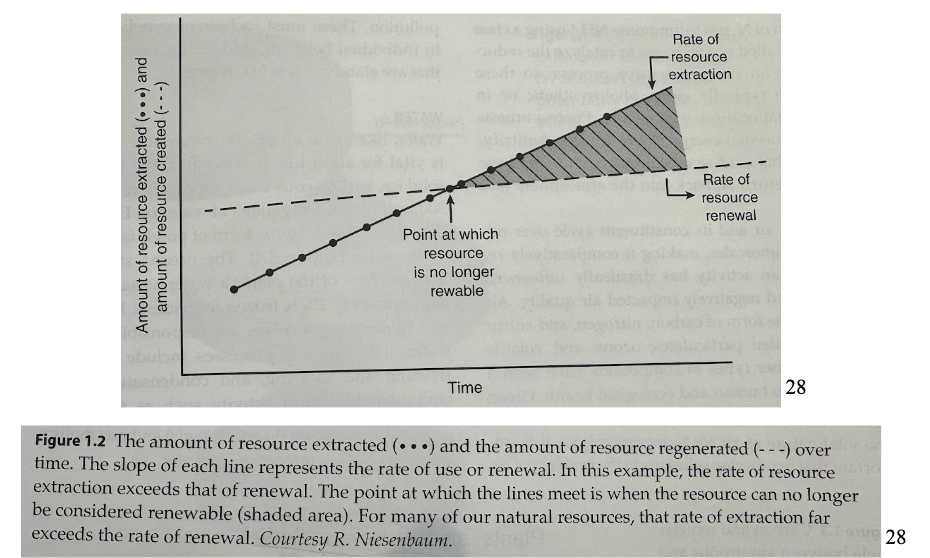
According to the government, Miami-Dade County’s natural resources are 24
- Sensitive Ecosystems:Coral Reefs, Biscayne Bay, Coastal Wetlands, the Everglades Marshes, Hardwood Hammocks, Imperiled Pine Forests, Florida Aquatic Preserves and Water Conservation. A major ecosystem that provides many services is the Florida Everglades.
- They offer productive fisheries, wildlife habitat and recreation opportunities for locals and tourists
The sustainability of natural resource extraction is determined by how invasive the removal process is as well as the time needed for the given resource to naturally replenish.
Natural resources are defined as biological materials or aesthetic assets that are provided by nature, without human intervention, that can be transformed into some form of benefit, both economic or immaterial. 26
Miami-Dade is known for being one of the biggest urbanized barrier islands in the United States. The county is uniquely positioned as it needs to balance the inextricably linked economic and environmental productivity. 7
Preserving Miami-Dade’s natural ecosystem is essential to the areas as it protects the precious land from destruction and supports the flora, fauna, and scenic view that generates billions of tourist dollars. The natural resources improve the quality of life for its residents and visitors. Their urban environment creates a great natural capital with abundant waterways, coastal dunes, natural mangrove shorelines, 26 parks and green spaces, and just over seven miles of white, sandy beaches; however, these are all in jeopardy if they are not properly managed and cared for. 7
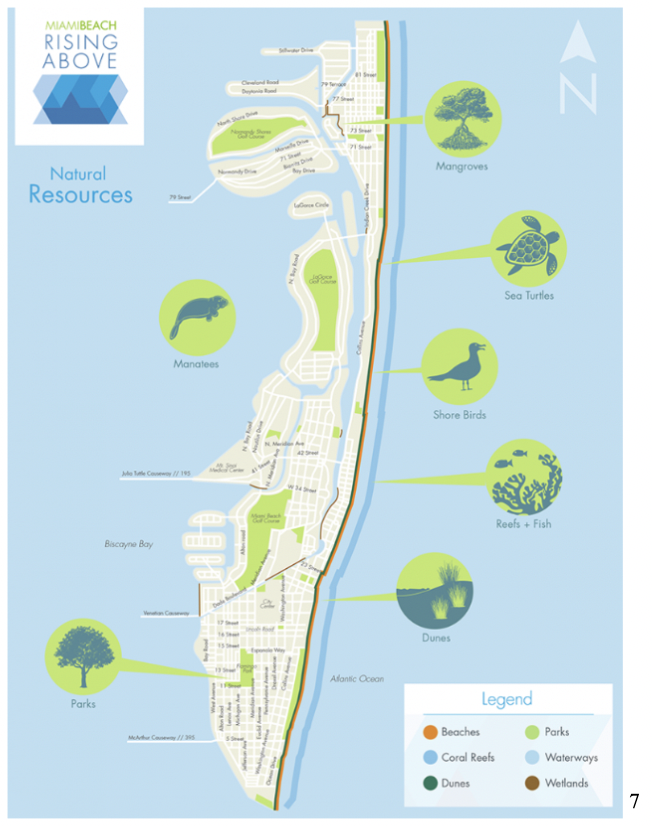
Miami’s Specific Challenges
Habitat Destruction
Habitat destruction is the process by which a natural habitat cannot support its native species. This is one of the most pressing and most frequently cited issues facing Florida. Natural habitats have been on a decline in terms of health and acres. Over the past 100 years, natural lands have been converted to agricultural land, rangelands, and expansion of urban areas. In the mid 20th century, Florida lost 7+ million acres of forests and wetlands to development. The projected 18 million new residents to Florida will immensely heighten the competition between wildlife and humans for land and natural resources. Habitats will be lost and degraded. If development continues at this rate, the animals, fish, and other wildlife we know and love today will dissipate. 7 45
Wildlife needs wildlands to survive and thrive. Florida’s population is expected to increase exponentially within the next few decades. The Florida Fish and Wildlife Conservation Commission predicts that Miami-Dade will need about 7 million additional acres of land by 2060 to account for society’s needs. Rural and natural lands will be transformed into urban malls, houses and more. 45 That number is impossible to obtain as sea level rise is leading to a net loss of usable land and coastal erosion. Not to mention, Florida’s low lying terrain exacerbates all issues, as its elevation is 3 feet below sea level compared to the national average of about 2,500 feet above sea level. Miami-Dade’s highest point is about 20 feet above sea level and is mostly unmarked from developers.
What does habitat destruction look like?
Habitat Fragmentation
Florida’s booming population growth, tourism industry, and rapid urbanization has fragmented natural habitats – impacting both human and non-human species.
Habitat fragmentation occurs when a large natural habitat is segmented into smaller isolated habitats by the creation of roads, buildings and other urban features. In broken habitats, a higher proportion of edges are exposed which decreases the land’s productivity and value.2
See images below:
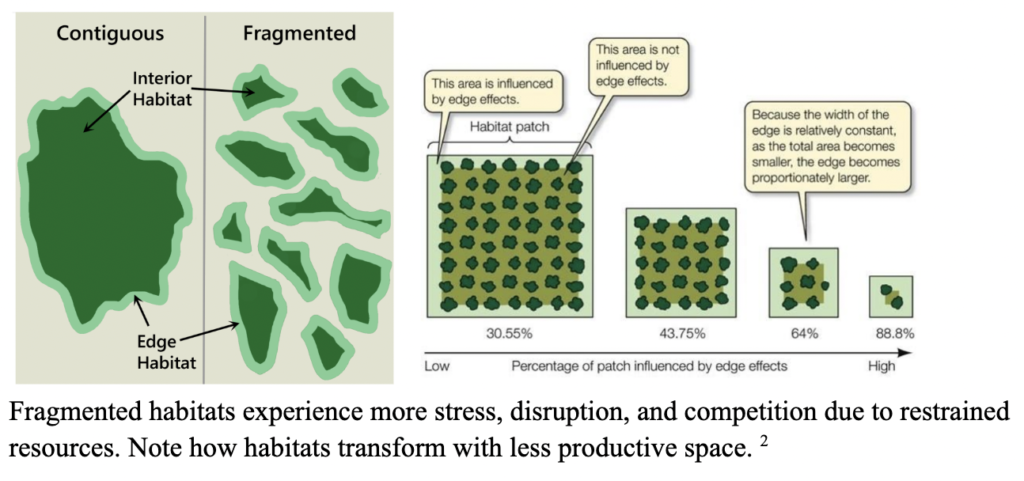
Impact of Fragmentation
- Decrease in overall biodiversity
- Weakens the habitat’s resilience due to stressors
- Negatively impacts productivity
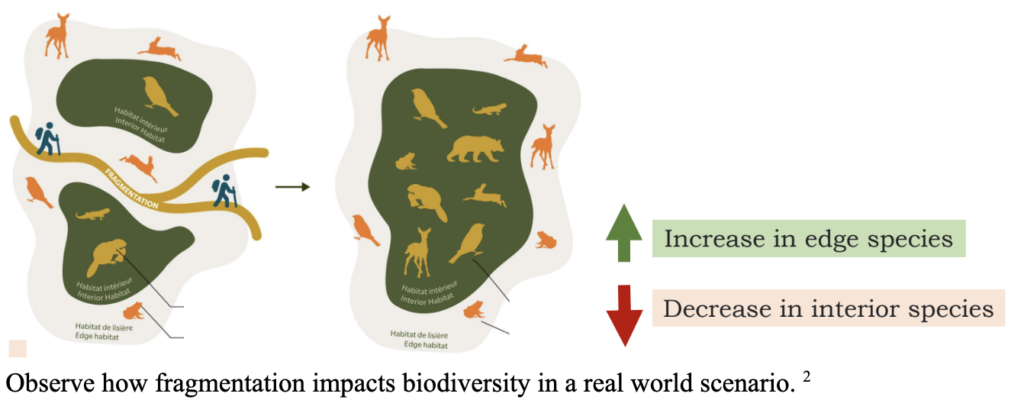
Habitat Fragmentation & Ocean Ecosystems: The Manatee
Similarly to land habitats, ocean habitats are fragmented intentionally and by accident.
- Intended Fragmentation: Land expansion, fishing zones, the creation of boating docks.
- Unintended Fragmentation: A shipwreck, large piles of garbage, any kind of pollution.
This is harmful for many species, however, one of particular interest is the Florida Manatee. This native species is considered a Floridian keystone species that is pivotal to supporting the ecosystems they inhabit. Their herbivorous diet maintains the health of the seagrass beds within their freshwater and estuary environments. 39 Despite the species’ lack of natural predators, Florida manatees are dying out and have been considered threatened since 2017 by the U.S. Fish and Wildlife Service (FWS). 39
Why are Manatee Populations Declining?
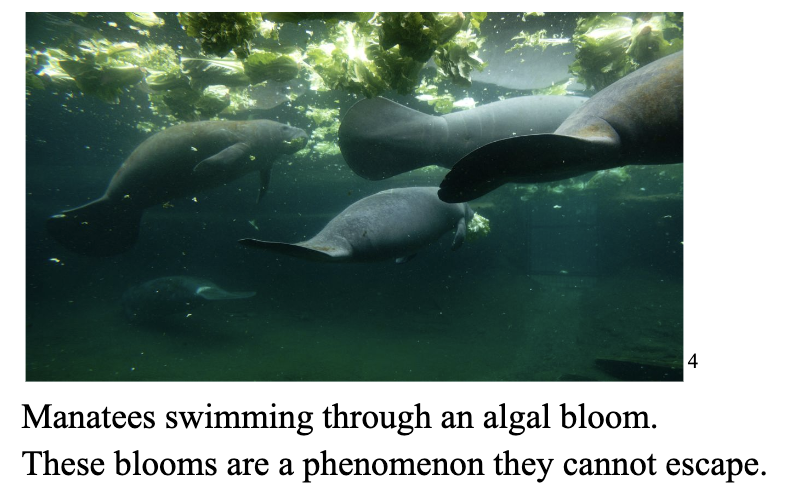
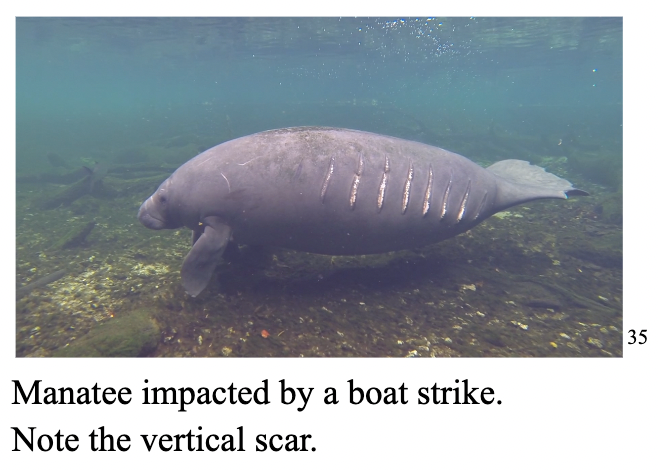
Manatees continue to be threatened due to the loss of warm and shallow water habitats, periodic die-offs due to red tides and unusually cold weather events and boat strikes. Elizabeth Fleming at Defenders of Wildlife said that “Manatees are taking hits from every direction, whether it’s loss of warm water habitat, lack of food, vessel strikes, entanglement in marine debris, entrapment in water control structures, harassment and other threats.” 3 33 Moreover, urban shoreline developments continue to grow from the coast line, destroying their natural nesting areas. With increased urbanization, sewage, manure, and fertilizer have a high likelihood of entering waterways as a result of frequent rainfall. Due to this, intense algal blooms can occur that suffocate fish and generate toxins that can kill manatees upon consumption. 25 19 3
Read More about Algal Blooms impact on the Florida Manatee
Read More about the boat strikes in 2019
Read More about the species and view: Florida’s Stock Assessment to learn about the whereabouts of the species, mortality rates and more.
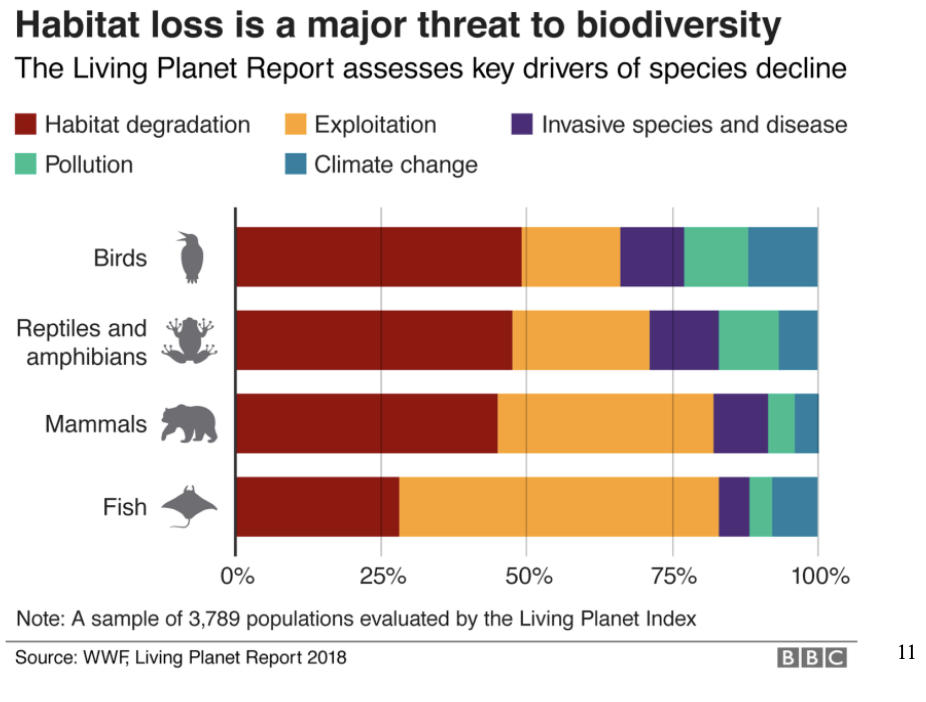
Why are Manatees an important natural resource?
Manatees are natural resources as they are keystone species that enable their environments to thrive at equilibrium. They ensure their habitats provide enough food, shelter, regulatory services and more. Their presence enables a healthy nesting habitat for endangered sea turtles, butterflies, and several threatened and endangered plant species such as the Biscayne Prickly Ash, Beach Cluster Vine and the Beach Star. 7 16
They are an especially interesting species when you consider their social and cultural value. Manatees are considered charismatic megafauna, or a species relevant to popular culture and act as tourist attractions. They are frequently leveraged in advertising and promotional materials to generate tourist income and sometimes money for conservation efforts. Other examples of charismatic megafauna are elephants, rhinoceroses, giant pandas, penguins, gorillas, koalas and more. 42
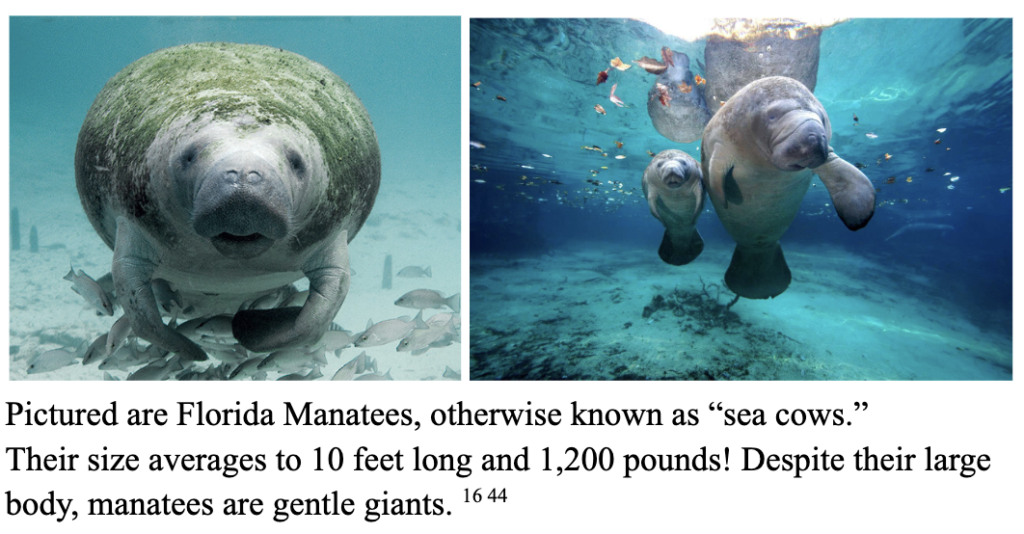
Learn more here about more species like the Bachman’s Warbler, and South Florida Rainbow Snake that have become extinct due to development and subsequent habitat fragmentation. 20
Wetland Eradication & extinction
Wetlands contribute many ecosystems to Miami-Dade – they regulate water quality, provide key animal habitats and nursery areas, and protect against coastal erosion, recreation and more.
Florida contains (drop down)
View Miami-Dade’s pamphlet on Wetlands, their importance and key areas of concern.
Freshwater Wetlands: Marshes and Swamps 23
- Located in western and southern parts of the county.
- Comprise one-third of all Florida wetlands.
- The largest of these wetlands being the Florida Everglades.
- A major element of the South Florida landscape despite the prominence being reduced to half of their original extent.
- Natural fires in the summer season are essential to this ecosystem as it prevents destruction from invasive species and converts dead plant material into nutrients to be released back into the soil.
- Vegetation: herbaceous tropical plants rooted in shallow water
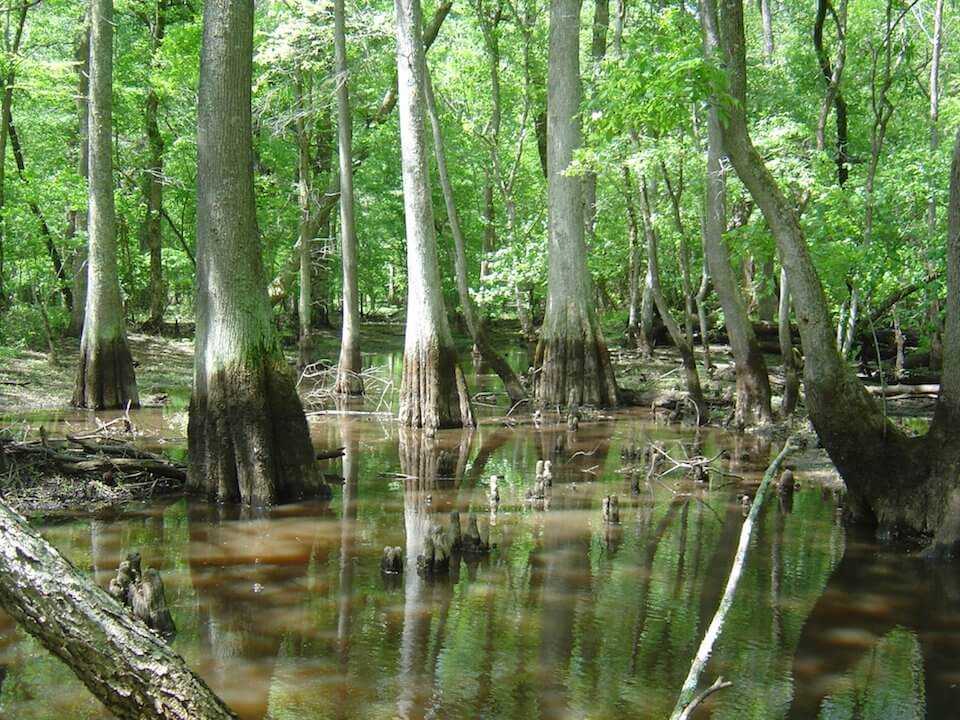
Coastal Wetlands
- Consist of salt marshes and mangrove swamps.
- Provide resources for both terrestrial and aquatic food chains.
- Provides areas for aquifer recharge, supports fish and wildlife habitat, naturally protect water quality and sequester carbon
- Therefore, permits are required for work in wetlands.
- Coastal wetlands cover about 40 million acres and make up 38% of the total wetland acreage in the United States.
- Vegetation: Rushes, sedges and grasses. 33 22 41
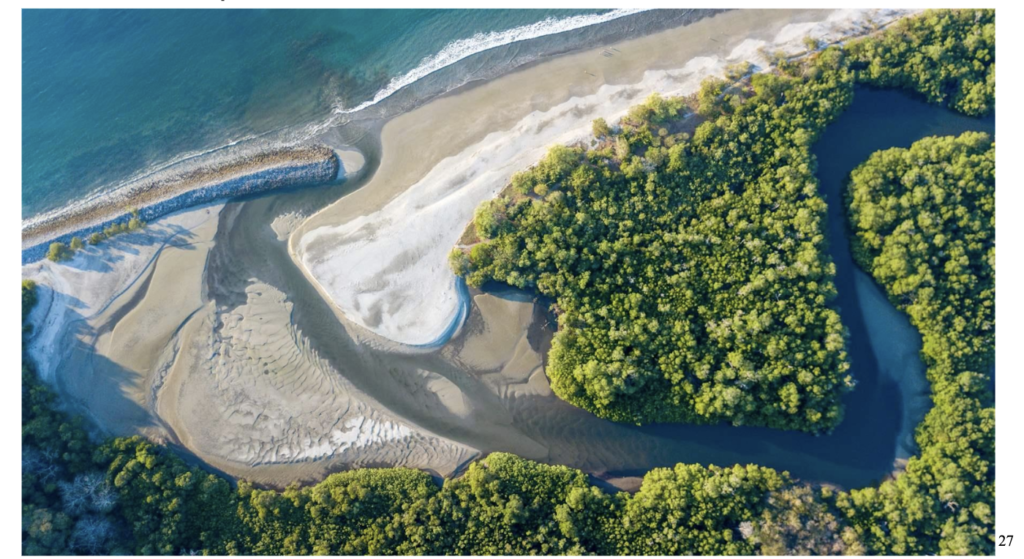
Salt Marshes
- Mostly found in the intertidal zone of Miami-Dade, where the ocean meets the land between high and low tides.
- Are found in the transitional zone from the land to salty and brackish waters.
- A highly biologically productive ecosystems driven by the energy of derived from the breakdown of marsh grasses into plant particles (detritus)
- Offers nursing and feeding grounds for 70% of Florida’s commercially valuable fisheries
- The destruction of Florida’s salt marshes has negative effects on fishery resources as their estuaries provide nursery areas for at least 70% of Florida’s important recreational and commercial fisheries. 34
- Vegetation: Grasses, salt tolerant plants that protect the coastline from wave action and erosion. 33
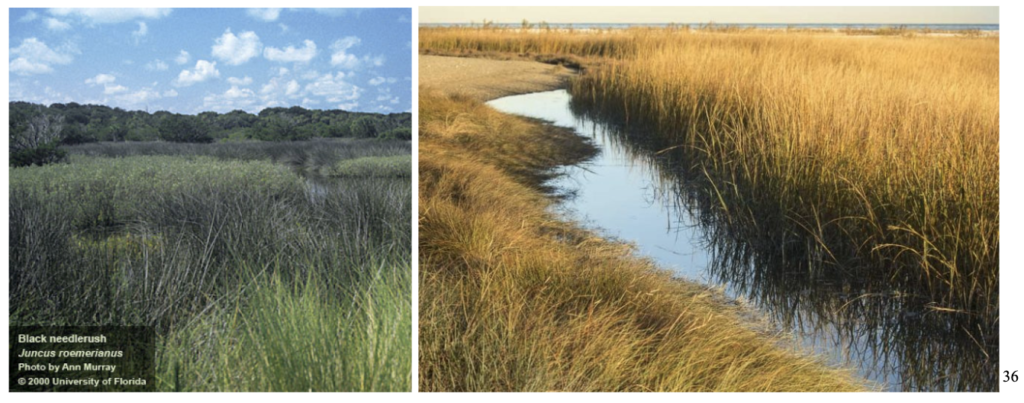
Challenges: Despite a ecosystem’s ability to be naturally dynamic, human changes are harming the environment – changes in water quality, pollutants like nitrogen and phosphorus, filling in activities, erosion, climate change jeopardize the equilibrium of each of these habitats 3
Ocean Warming
Refer back to the “A Global Update: Water’s Impact on Climate Change” from the “Water Resources” page. As you may recall, the Atlantic Meridional Overturning Circulation, or the large ocean circulation that brings warm water from the tropics into the Atlantic jet stream, is in danger of collapsing. Proof of its failure has been evident and felt by species because as global temperatures rise, so do ocean temperatures. The ocean absorbs ~90% of the globe’s excess heat. Hotter temperatures alter marine ecosystems in terms of climate and beyond, shifting species habitats and making some areas uninhabitable. 38
Global warming creates a positive feedback loop of:
Global warming leading to ocean warming and glacial melt, leading to the desalination of ocean and releasement of accent trapped GHG; leading to warmer ocean temperatures.
Learn more about more effects of ocean warming from the United Nations. 38
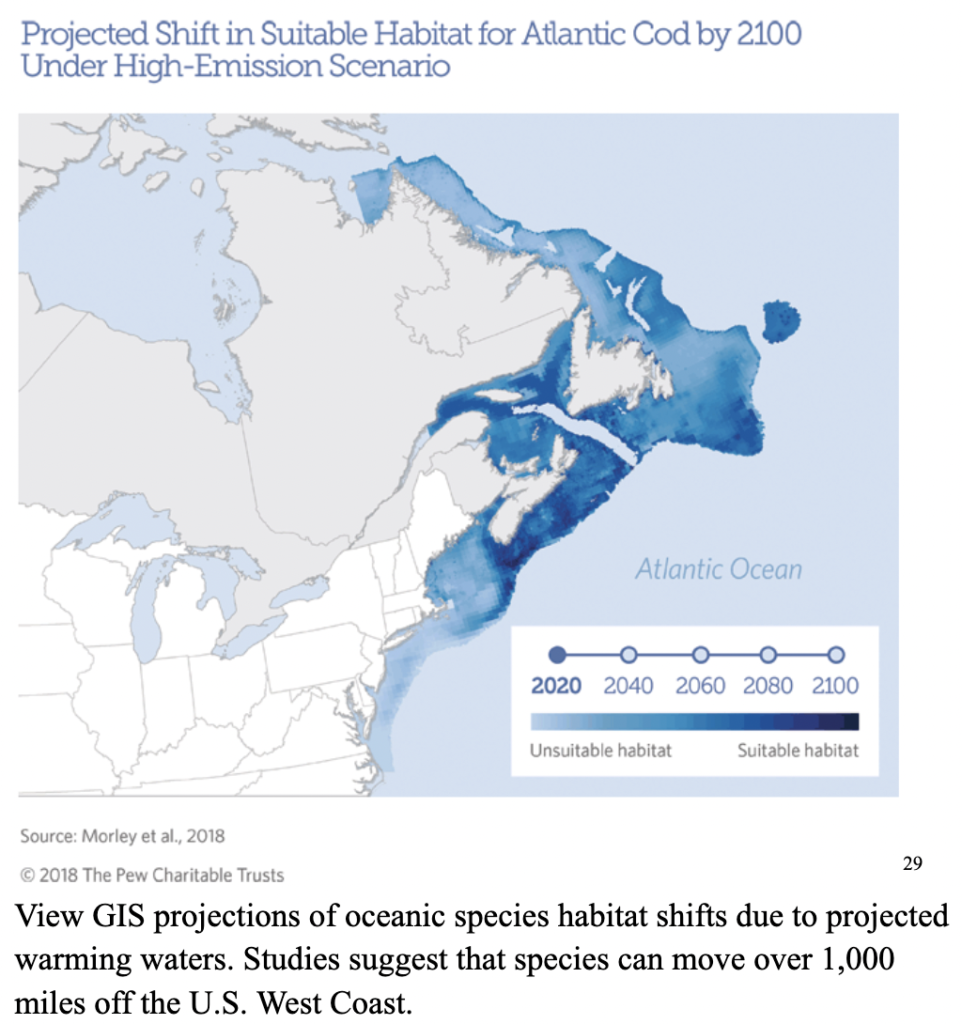
The degradation of the aforementioned habitats impact the industry of ecotourism which involves traveling to destinations where plants, animals, environments and cultural heritage are the primary attractions. Ecotourism can offer tourists insights into the impact that humans have on our environment, if approached correctly. Without Florida’s key habitats, this essential climate education tool will be lost.
Housing Affordability Crisis
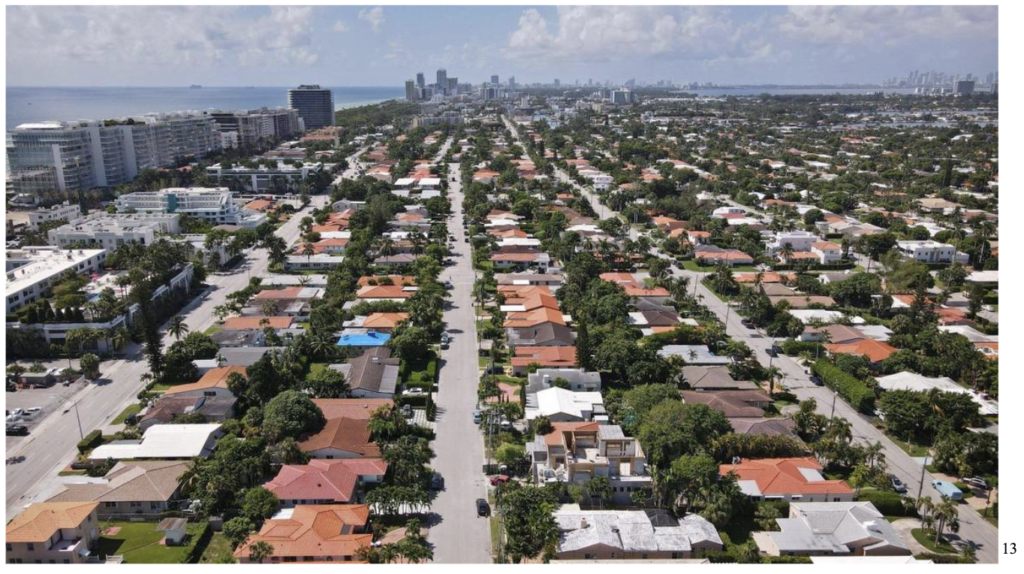
Shelter is key for any organism, as we have seen through melania of documented history. For humans, housing is an essential resource that many are deprived of for a variety of reasons.
Housing affordability issues can be created by or exacerbated by poor urban planning, a lack of affordable housing options, the loss of a job, the inability to pay for health-care, family challenges, criminal background preventing employment or more issues. Homelessness is often unrightfully blamed on the individuals however, it is a public issue. The root of the problem lies within the housing options, policies and community support, especially in Miami-Dade county.
According to Fortune, Zillo indicated that the average home in Miami costs over $522,000. This is approximately ~56% more expensive than the median-priced home in the U.S. 14
Why is Miami so Expensive?
Miami is an attractive city to live in due to its lovely weather, sun exposure and beautiful views. It acts as a safe haven for many Northerners and Canadians who seek to escape the snow. It is estimated that the entire state of Florida welcomes about one million additional temporary winter residents. 1
There are two sections of temporary residents in Miami, “snowbirds” and business executives.
Snowbirds
Snowbirds are typically wealthy, retired individuals ages 50+ who enjoy their temporary get away for about six months, before returning home. Many snowbirds live in Miami-Dade county and neighboring municipalities. 1
Business executives
Business executives along with their corporate headquarters are predicted to be moving to Miami-Dade county. According to ISG Reports, big players such as Carl Icahn of Icahn Enterprises, Ken Griffin of Citadel, and Jeff Bezos of Amazon have moved to Miami due to the desirable standard of living it provides. This shift is anticipated to be seen amongst other corporations. 37
With a high interest in living in Miami from wealthy individuals, realtors are focusing on the high end markets. Big Business is fueling further development of houses locals cannot afford. This leaves people on the streets and impacts the local workforce. Additionally, older buildings are difficult to manage for landlords due to a lack of data to import during the leasing process. These buildings are often left unrented, sold and torn down, gentrifying the area and giving non community members the financial power to price out certain local communities. 37
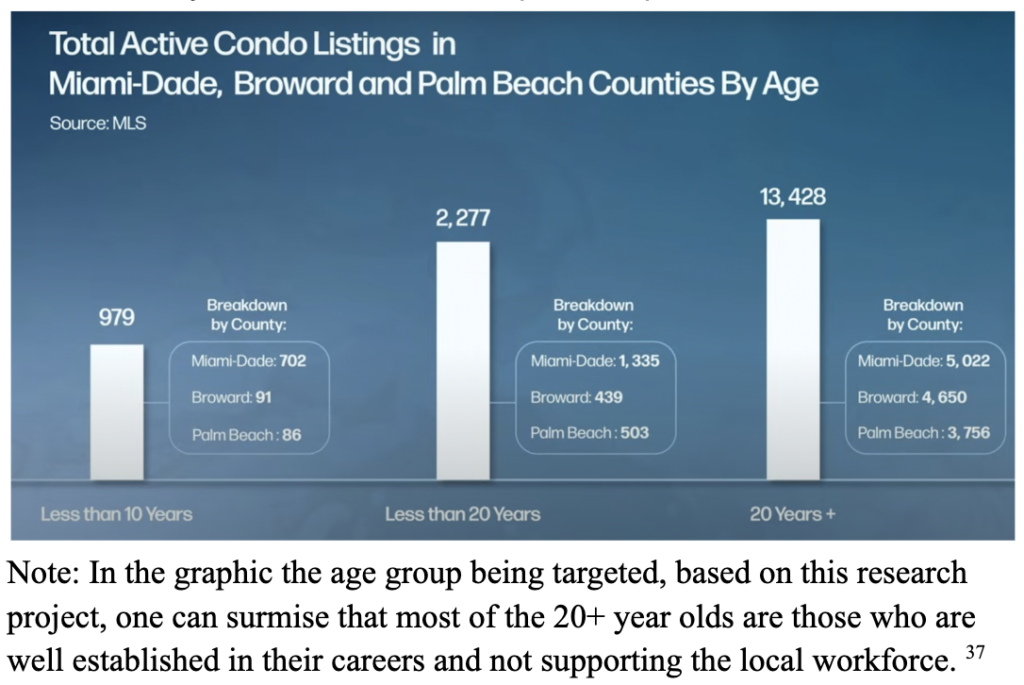
See below how the appreciation rate, or the rate at which the land’s value increases overtime, in Southern Florida is experiencing a continued uptick. With potential monetary value realtors and investors are focused on bringing wealthy individuals to Miami, to purchase second homes, instead of serving those who inhabit Miami currently. ISG Reports specifically advocates for the sale of new units in the millions which will be priced inaccessibly. 37
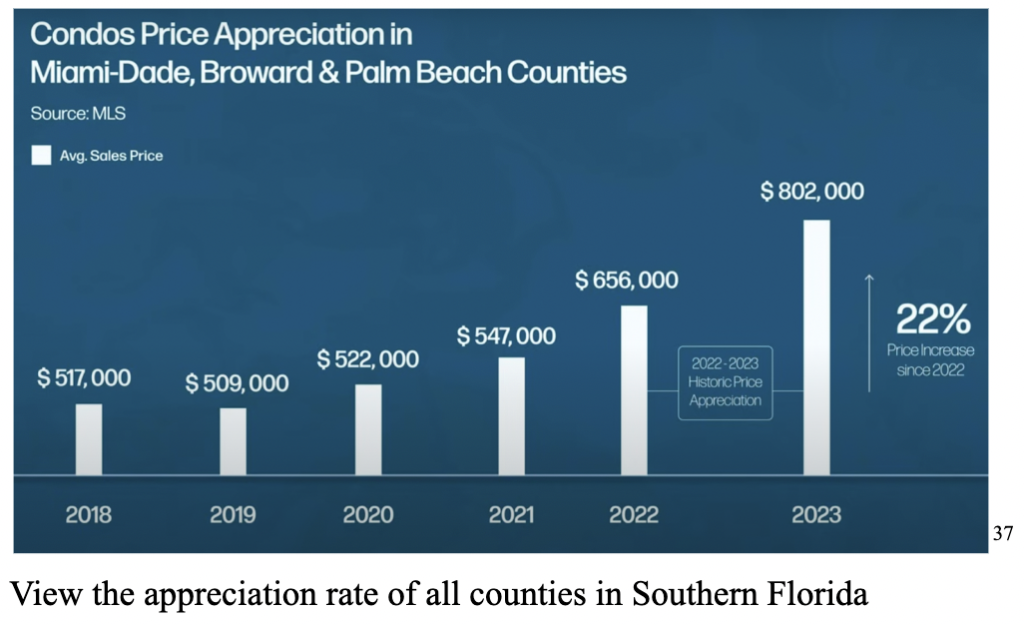
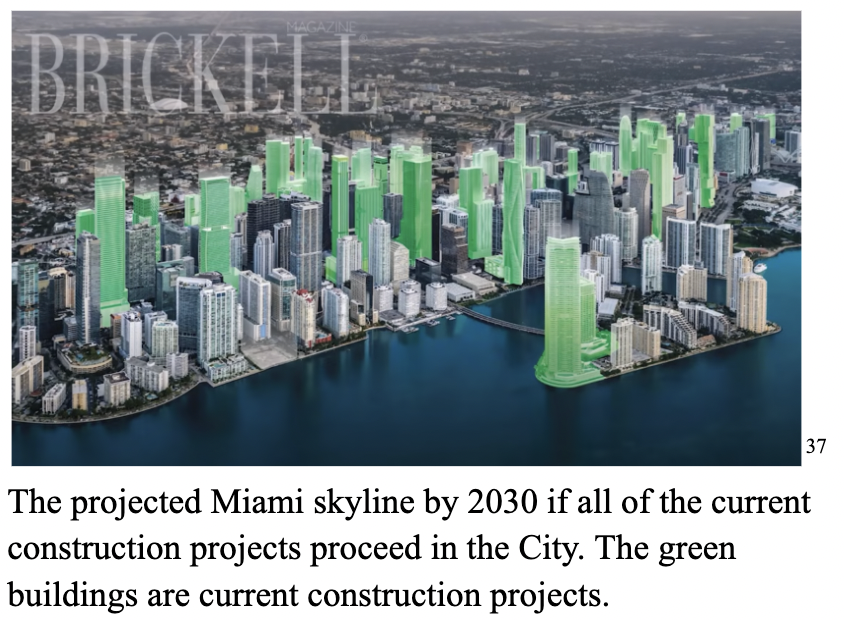
How this Impacts Miami Residents
Due to this recent economic trend, the Miami Metro Area has the highest percentage of renter households spending over half of their income on housing costs in the nation. This can be attributed to the factors above and the subsequent lack of accessible and affordable housing options. It exacerbates challenges in terms of attracting and retaining a talented workforce to promote regional economic growth and sustainability. Simultaneously, Miami is grappling with the ever-increasing sea level rise and related flooding impacts. The Southeast Florida Regional Climate Change Compact projects the region will receive an additional six inches of sea level rise by the end of 2030. With development continuing on this trajectory, action must happen. 21
View more about a concept coined “Climate Gentrification” here
Learn about untouched parts of Miami and sea level rise in the area
How is housing a natural resource?
This examination would not be complete without an analysis of the housing situation in Miami-Dade County. After careful consideration with my advisor, Dr. Richard Niesenbaum, we decided that the housing shortage is best covered in this category. Global natural resources such as forests, water and other precious materials are used to create building materials such as wood, cement and furniture. This urbanization is a form of deforestation as an increased population calls for increased resource consumption. Additionally, as covered in this essay, housing is essential for humans. This affordability crisis has resulted in response to an overconsumption issue.
Relevant Stakeholders
Habitat Destruction
- Miami’s Permitting Office
- Progress Florida
- Miami Waterkeeper
- The Center for Biological Diversity
- US Fish and Wildlife service
- UF Health – Aquatic Animal Health
- Fish & Wildlife Foundation of Florida
- Florida Fish & Wildlife Conservation Commission
- The Florida Department of Environmental Protection
- The South Florida Water Management District
- Universities in the Area such as the University of Miami
- Environmental Researchers
- US Department of Interior
- US Department of Commerce
- Miami-Dade County Departments
- Park Recreation and Open Spaces
- Regulatory and Economic Resources
- & many more
Housing Affordability Crisis
- Permanent Residents of Miami-Dade County
- Temporary Residents of Miami-Dade County
- Low-income Individuals
- Local Businesses and the Workforce
- Students and Staff of Local Universities
- Researchers in the Field
- Healthcare Professionals
- Recreation and Open Spaces Department
- Non Profit Organizations in the areas that focus on this issue
- The City of Miami’s Police
- Miami-Dade’s Police Department
- Emergency Services
- The Mayor’s Office
- Builder associations
- Realtor associations
- Big Business
- Miami’s Permitting Office
Miami’s Current Solutions & Further Solutions
Education
We all have a shared responsibility to protect our natural resources and education can play a crucial role in addressing challenges related to natural resource management. This pertains to everything from species and habitat preservation to the social challenges.
Educational campaigns for people of all ages…43
- Helps individuals and communities internalize the importance of natural resources, such as animals, water, forests, minerals, and biodiversity.
- This increased awareness about our finite resources can foster deeper connections with our natural world and more awareness.
- Provides citizens of all ages with scientific knowledge about natural resource distribution and the impact of human activities on them which enables informed decision-making and better resource management practices.
- Impacts policy making
- Can transform social behavior patterns such as energy consumption, transportation habits, and dietary preferences
- Facilitates community engagement through conservation efforts which can mobilize collective action towards environmental stewardship.
- Prepares individuals and communities with the knowledge and skills needed to adapt to environmental changes and build climate resilience in an informed holistic manner.
View the Guidelines and Education for protecting Florida Manatees
View Guidelines on for Viewing Manatees, suggestions include being aware and be prepared on the waterways, Using propeller guards on your vessel, avoid traveling in seagrass or other shallow areas, and educating yourself on the species. 10 43
Education campaigns specifically targeted at early childhood years can lead to immense impact in terms of awareness, action and fostering personal connections with nature. People cannot care about something they don’t know about, which makes childhood education pivotal in the fight against climate change and loss of natural resources. Children have the unique ability to learn and teach those around them. View this example of a class in Arizona that worked on a project that had a real impact on their lives, Floridians lives and the health of the planet. The impact this class and classes alike can have is powerful. This is why our country should consider requiring an environmental class be included in early childhood and high school curriculum. 6
View Education Resources provided by Florida’s Fish and Wildlife Conservation Commission 9
Conservation Gifts
One way to increase awareness of species and conservation efforts is to purchase items such as conservation stickers, license plates, bracelets and more. Oftentimes a portion of the profits, often anywhere from 10-30% will be donated to a cause of their choices. While many of these companies may be greenwashing, items like this achieve higher viability of associated challenges and issues while increasing conversation and potential connection to species and their ecosystems.

Legislation
Policy has the potential to enact powerful change, especially when it comes to preserving natural resources and animal populations and habitats. View below key legislation protecting specifically manatees.
- Endangered Species Preservation Act of 1966: In 1967 under this act, the Florida Manatee was considered by law
- The manatee was reclassified in 2017 as a threatened species this act
- Manatees are considered a “strategic stock” and “depleted” under the Marine Mammal Protection Act of 1972, as amended (16 U.S.C. 1361 et seq.)
- The effectiveness of this act is questionable. The species is protected by numerous laws however they still experience high amounts of injuries and death due to activities in which the law prohibits. It is difficult to enforce these acts as manatees are found in so many places and are always on the move.
- Florida Manatee Sanctuary Act of 1978: Makes it illegal to harass, hunt, capture or kill any marine mammal as the act states; “It is unlawful for any person, at any time, intentionally or negligently, to annoy, molest, harass, or disturb any manatee.” 43 45
- Educational campaigns aid in enforcing these acts as they can teach boaters how to find patterns caused by a manatee’s tail on the surface of the water. This can decrease fatal boat strikes in shallow waterway.
- Anyone who does not abide by this law will face a maximum fine of $500 and/or imprisonment for up to 60 days.
- Conviction on the federal level can result in a fine of up to $50,000 and/or one year in prison.
- Educational campaigns aid in enforcing these acts as they can teach boaters how to find patterns caused by a manatee’s tail on the surface of the water. This can decrease fatal boat strikes in shallow waterway.
- In the state of Florida a free Manatee Alert mobile app is available.
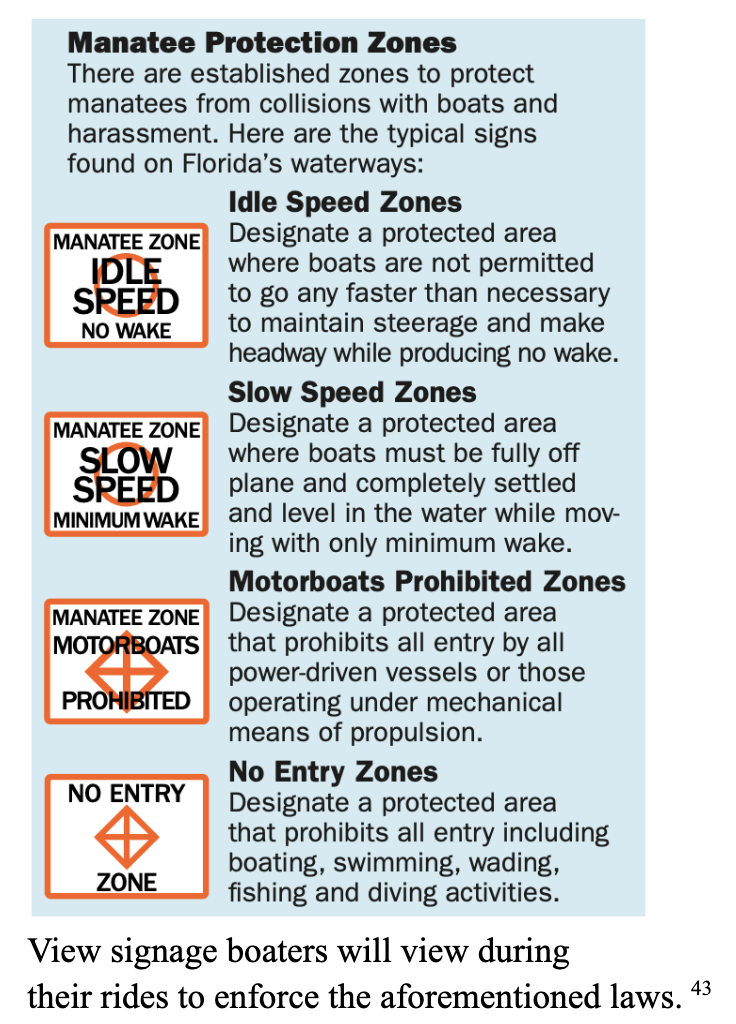
Policies also exist to protect the sacred ecosystems that support countless natural resources. There are strict regulations on construction projects.
- A Class I permit is required…
- Before any work occurs in, on, over or upon tidal waters and saltwater wetlands.
- Dredging
- Filling
- Construction
- Prior to the creation of all commercial boat docking facilities and waterfront boat storage facilities with 10+ spaces
- Before any mangrove trimming trimming or alteration projects
This permit helps the county manage the impacts from construction on coastal wetlands and tidal waters. 5
- Legislation has been created to counteract human changes on Floridian Land.
- The State government declared Biscayne Bay as an Aquatic Preserve or “Aquatic Park” in 1974. Similar legislation has happened to other areas that have substantial loss resources around the state and county.
- The Everglades Restoration Project is another important project where legislation was introduced to restore the original “river of grass” as well as other key resources.
- Tax incentives for businesses have also been a powerful solution as it supports corporations to conduct climate impact reporting which can be leveraged to decrease impacts.
View Florida’s State Action Plan, Florida’s Wildlife Legacy Initiative and Florida’s State Wildlife Grants Program to read more about the legislation and grant options available to enact change.
Affordable Housing Units
Miami’s department of Public Housing & Community Development offers a Housing Affordability Tracker which is currently under maintenance.
- The Department of Housing and Urban Development administers federal aid and Miami-Dade Public Housing and Community Development manages housing for low-income residents at rents they can afford.
- They manage 8,000+ public housing apartments
- Provide financial help through the federal Section 8 program to 18,00+ families.
- They offer Accommodations in compliance with the Title II of the Americans with Disabilities ACT (ADA), Section 504.
- A reasonable accommodation that the office honors would be considered “a change, modification, alteration or adaptation in policy, procedure, practice or program of a housing facility that provides a qualified individual with a disability the opportunity to participate or benefit from, a housing or non-housing program or activity.” https://www.miamidade.gov/global/housing/home.page
- It is unclear how many accommodation units are available in the city. I contacted their office with no response. 32
- There are family friendly developments which are smoke free for those with children. These facilities decrease the chances of citizens developing disease and early death due to secondhand smoke exposure. 30 31 32
Miami Affordability Project (MAP)
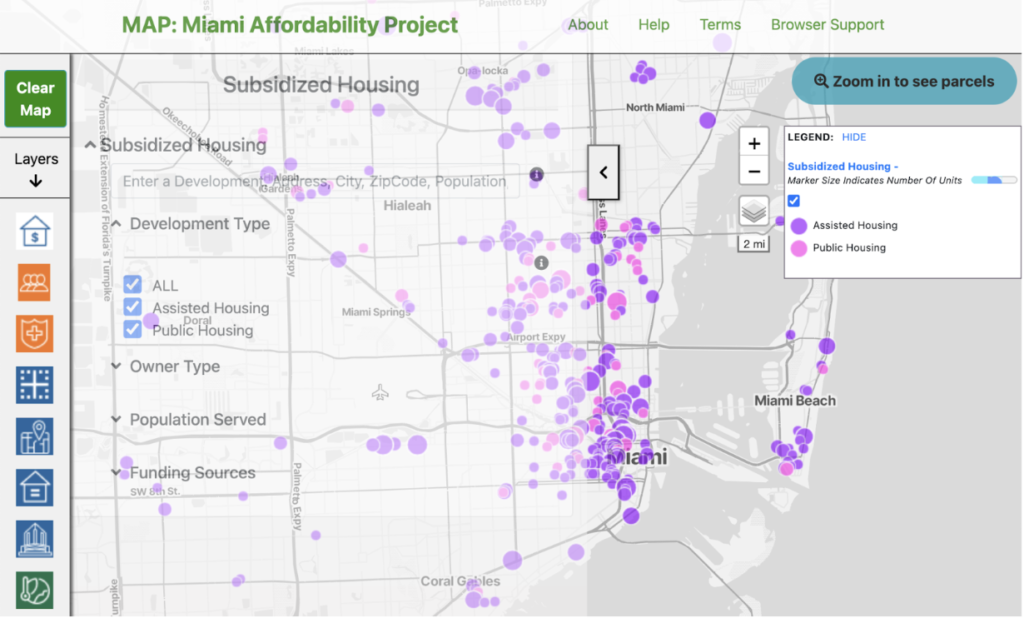
Click the image to view MAP.
MAP was launched by the University of Miami’s Office of Civic and Community Engagement, with the goal to increase visibility on the distribution of affordable housing in the greater Miami area. This interactive online map includes details about climate change, sea level rise, flooding impacts as they interact with Miami’s affordable housing options. This data visualization tool combines two of Miami’s most prevalent challenges – affordable housing and climate change – in order to engage a wider audience in discourse about the livability, equity and responsible growth in Miami. This resource is a great example of how community partners can further visibility, urban resilience, support informed decisions and increase equity in sustainability with the housing stock. 21
Target Market: City Planners, Policymakers, Affordable Housing Developers, Community Organizations, Urban and Environmental Researcher
Note: Was last updated in 2020
IPAT
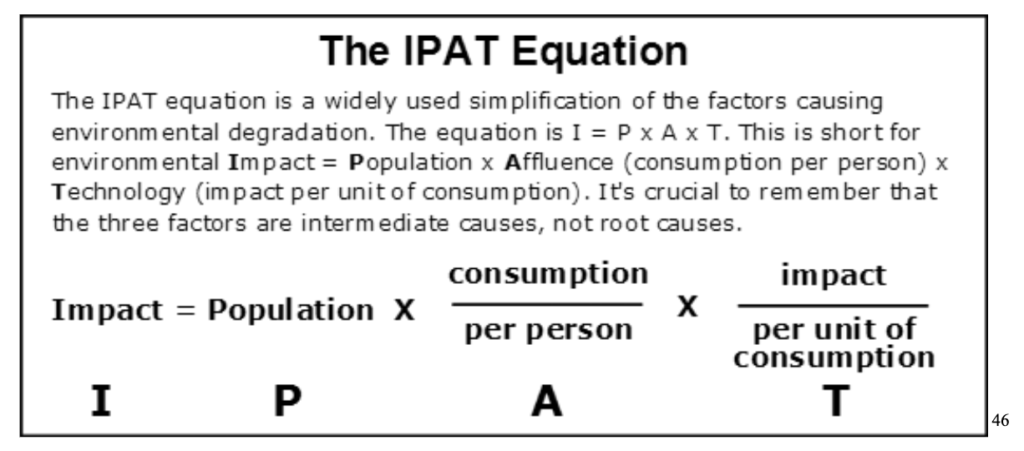
The IPAT model is a method to determine the per capita consumption rates of a given area. This model has shown that developed countries consume approximately 32 times more total resources per capita compared to the least developed countries. To put this in perspective, the United States is only 4.5% of the world’s population however the residents consume an estimated 25% of the world’s natural resources. The IPAT model is a great tool to assess the impact of a city or county.
Further Solutions:
- Adopt An Animal/ Plant Programs offer numerous benefits, both for the environment and for individuals participating in the program. Their actual effect on the species can be limited and vary based on organization. Miami has an Adopt-a-Tree program program. 5
- Using the Systems Thinking ideology that considers all of the interacting biological, social and economic factors as a whole system. This includes making viewing problems as an interconnect issue with complex relationships, rather than splitting it into parts it views a problem as a bigger picture.
Conclusions
All solutions covered in this section are embracing future forward thinking. Intentions of the initiatives seem to be to counteract negative human impacts on the environment by maximizing natural renewal rates, protecting and restoring the health of natural systems and preserving biodiversity to serve the needs of present and future generations. Despite these well intentions, based on our definition of sustainability, Miami-Dade does not approach the issues pertaining to natural resources sustainability.
Overall, there is a lack of inclusive and transparent reporting in terms of housing affordability and effectiveness of conservation efforts. The information regarding affordable housing is limited and ambiguous. There are staff members to reach out to, however, inefficiencies seem to persist within the department’s communications systems. Moreover, legislation and regulation can support ethical economic development, however the actions, projected trends and descriptions of Miami-Dade county’s initiatives suggest that there are inequitable opportunities and exploitation of the workforce and natural resources. The enacted current solutions do not offer an elevated standard of well-being to the long-term local residents but rather ensures that temporary visitors have a satisfying experience. The basic human rights of visitors seem to come at the expense of permanent residents.
Limitations & Barriers to Solutions
Political
Florida being a climate denying state, there are a lot of political pressures pushing policies one way or another. While there has been state investment in conservation, political and business development often trumps environmental value.
Social
Historically, it is difficult for governments and residents to realize how much value asset protection provides ecosystems and human societies. Many struggle to view the long term and short-term values of choices, however they are projections methods to visualize potential impacts. Society should focus on making smart choices, not temporary easy choices.
Economic
There is a balance between supporting local communities and profiting off of opportunities. Oftentimes, governmental budgets struggle to find the funds to support natural infrastructure and green investments. On the citizen side, residents can struggle to monetarily support the communities in terms of housing and conservation. Citizens should not solely have the responsibility to absorb the costs of mismanagement a government has enable.
Broad List of Assets
- The Florida Everglades
- University of Miami
- Florida EPA
- National Park
- USDA
- Parks, recreation and open spaces
- Parks and Recreation
- Affordable Housing Centers of America
- Miami Homes for All
- Carrfour Supportive Housing
- Community Housing Development Organization (CHDO)
- Florida Non-Profit Housing| FNPH|Home
- SMASH
- Habitat for Humanity of Greater Miami
- Affordable Housing and Community development
- The City of Miami
- Hermanos De La Calle